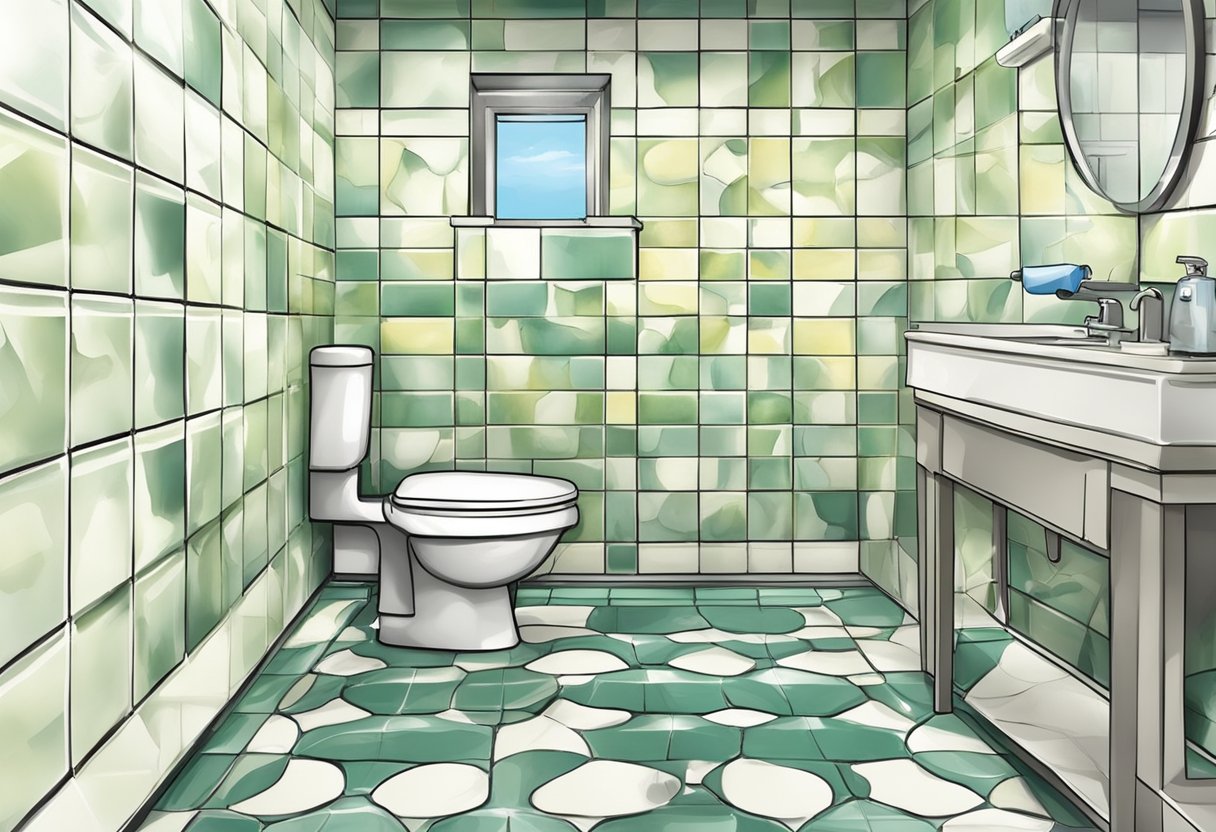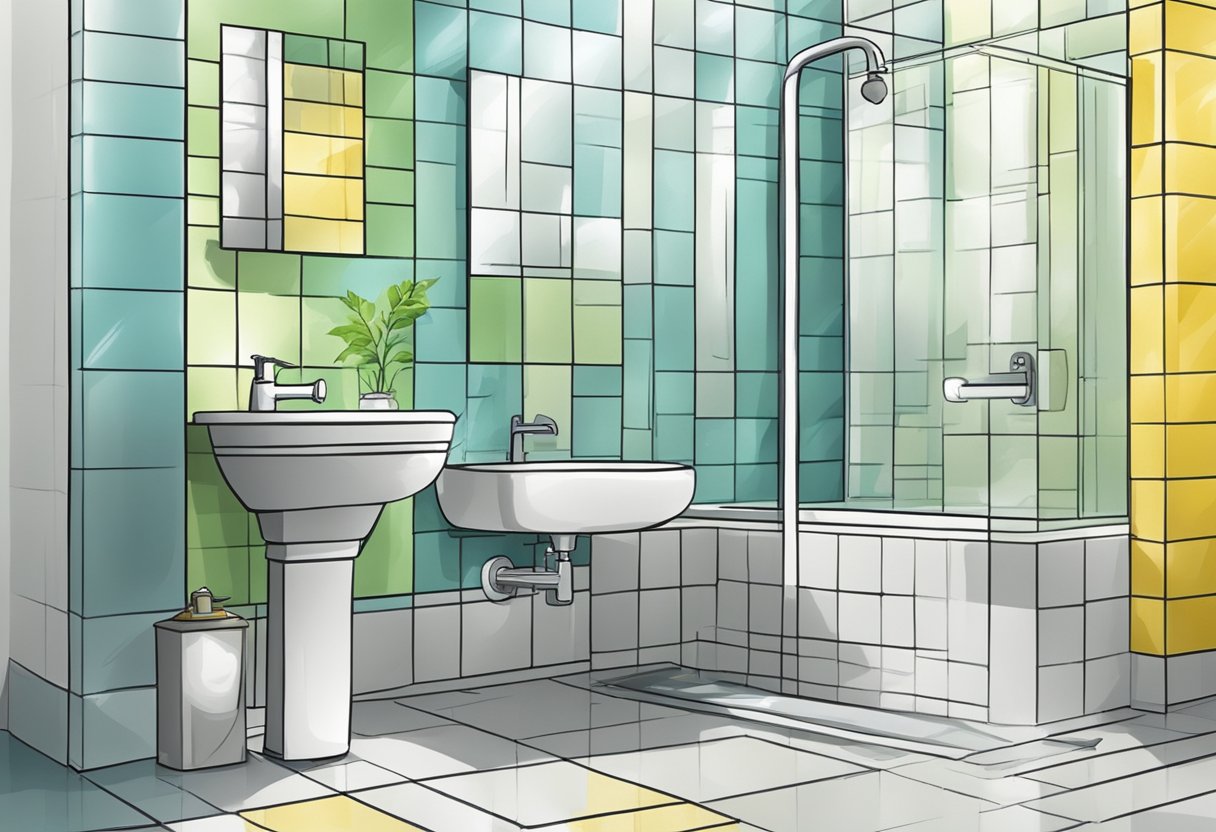Removing mold from bathroom tiles can be a daunting task, but it’s essential to keep your bathroom clean and healthy. Mold can grow on bathroom tiles due to the constant moisture and humidity, and it can be harmful to your health if left untreated. In this article, I will guide you through the process of removing mold from bathroom tiles and preventing it from coming back.

Understanding mold is the first step in removing it from your bathroom tiles. Mold is a type of fungus that thrives in damp and humid environments, making bathrooms a perfect breeding ground. Mold can cause health problems such as allergies, respiratory issues, and headaches. It’s crucial to remove mold as soon as you notice it to prevent it from spreading and causing more damage.
Frequently asked questions about mold in the bathroom include how to remove it, how to prevent it, and what products to use. In this article, I will answer these questions and provide you with easy-to-follow steps to remove mold from your bathroom tiles. By following these steps, you can keep your bathroom clean, healthy, and mold-free.
Key Takeaways
- Mold can be harmful to your health and should be removed as soon as possible.
- Understanding mold and its causes is crucial in preventing it from coming back.
- Regular cleaning and maintenance can help prevent mold growth in the bathroom.
Understanding Mold

Mold is a type of fungus that grows in damp and humid environments. It can be found in various colors, including black, green, white, and yellow. Mold reproduces by releasing spores into the air, which can cause health problems if inhaled.
Types of Mold
There are many types of mold, but the most common in bathrooms is black mold, also known as Stachybotrys chartarum. This type of mold thrives in areas with excess moisture and can grow on nonporous surfaces like bathroom tiles and grout.
Where Mold Grows
Mold grows in damp and humid environments, making bathrooms a prime location. It can be found on walls, grout lines, shower curtains, and even ceilings. Mold can also grow in hidden areas like behind tiles and under tubs.
Causes of Mold
Mold is caused by excess moisture and humidity levels in the bathroom. This can be due to poor ventilation, leaks, or dampness. Preventative measures like using an exhaust fan, dehumidifier, and sealing grout or caulking can help prevent mold growth.
Preventing Mold
Preventing mold growth in the bathroom is essential to maintain a healthy environment. Proper ventilation, controlling humidity levels, and fixing leaks can help prevent mold growth. Regular cleaning and sealing of grout lines can also prevent mold growth.
Health Risks of Mold
Exposure to mold can cause health problems like allergies, respiratory issues, and skin irritation. It can also exacerbate existing health conditions like asthma.
Removing Mold
Cleaning mold from bathroom tiles and grout can be done using various cleaning products. Vinegar, bleach, baking soda, borax, hydrogen peroxide, and ammonia are all effective cleaning solutions. It’s important to wear protective clothing and use proper ventilation when cleaning mold.
Cleaning Products
There are many cleaning products available to clean mold from bathroom tiles and grout. Distilled white vinegar, bleach, baking soda, borax, and hydrogen peroxide are all natural and effective cleaning solutions.
Cleaning Tools
A scrub brush, sponge, or clean rag can be used to remove mold stains. A toothbrush can be used for hard-to-reach areas like grout lines. It’s important to use protective clothing like gloves and a mask when cleaning mold.
Cleaning Techniques
A baking soda paste or liquid dish soap can be used to scrub away mold stains. A bleach solution or borax solution can also be used to clean mold. It’s important to rinse the surface thoroughly with water after cleaning.
Cleaning Specific Areas
Mold can be found on various surfaces in the bathroom, including walls, grout lines, and shower curtains. It’s important to use the appropriate cleaning product and technique for each specific area.
After Cleaning
After cleaning mold from bathroom tiles and grout, it’s important to dry the area thoroughly to prevent future mold growth. Using an exhaust fan or dehumidifier can help dry the area faster. Regular cleaning and preventative measures can also help prevent future mold growth.
Frequently Asked Questions
https://www.youtube.com/watch?v=aoiUO6tSwSk&embed=true
What are some effective ways to remove mold from bathroom tiles?
To remove mold from bathroom tiles, there are several effective methods. One way is to use a mixture of bleach and water. Another option is to use vinegar and baking soda. You can also use borax mixed with warm water. Scrubbing the affected area with a brush or sponge can help remove the mold stains.
How can I prevent black mold from growing in my shower?
To prevent black mold from growing in your shower, it is important to keep the area dry and well-ventilated. After taking a shower, make sure to wipe down the walls and tiles with a towel. You can also use a fan or open a window to increase ventilation. Regularly cleaning the shower with a mold-preventing cleaner can also help prevent mold growth.
Is it safe to use bleach to remove mold from bathroom tiles?
Bleach can be an effective way to remove mold from bathroom tiles, but it should be used with caution. Bleach can be harmful if not used properly and can damage certain surfaces. It is important to follow the instructions on the label and wear protective gloves and clothing when using bleach. You may want to consider using a natural alternative if you have concerns about using bleach.
What are some natural remedies to remove mold from shower grout?
There are several natural remedies that can be used to remove mold from shower grout. Vinegar and baking soda can be mixed together to form a paste that can be applied to the affected area. Tea tree oil can also be mixed with water and sprayed onto the moldy grout. Hydrogen peroxide can be mixed with water and applied to the grout with a brush.
How do I get rid of black mold on bathroom tile floors?
To get rid of black mold on bathroom tile floors, you can use a mixture of bleach and water. Apply the solution to the affected area and let it sit for a few minutes before scrubbing the area with a brush or sponge. Rinse the area thoroughly with water and dry it with a towel. It is important to wear protective gloves and clothing when using bleach.
What are the different types of mold that can grow in a bathroom?
Several types of mold can grow in a bathroom, including black mold, green mold, and white mold. Black mold is the most common type of mold found in bathrooms and can be harmful to your health if not removed. It is important to identify and remove mold as soon as possible to prevent it from spreading.
